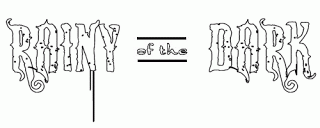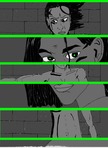M.R. Gott's Blog, page 21
October 2, 2012
Halloween Bash 40% Off Horror in October at Untreed Reads
Horror titles are 40% off at the Untreed Reads store. When you buy at Untreed you get a copy for your kindle, nook and a pdf for one low price. Titles in this sale include;
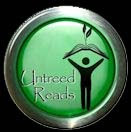
Click either image to link to the sale
Blood Sacrifice by Rick R. Reed (Friend of the site)Dante's Awakening by Devon MarshallGoodbye Lucifer by John Harold McCoyObsessed by Rick R. ReedOrlin Wood by Jeremy K. TylerPenance by Rick R. ReedStolen by Catherine StovallStrange People, Scary People by Tally HarbourThe Kingdom of Fear by Robert DeGrauwwWhere the Dead Fear to Tread by M.R. Gott
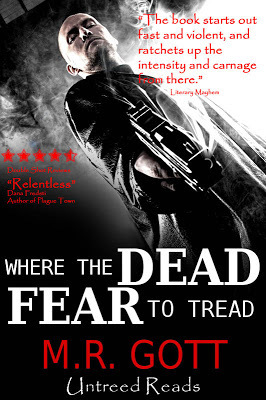


Click either image to link to the sale
Blood Sacrifice by Rick R. Reed (Friend of the site)Dante's Awakening by Devon MarshallGoodbye Lucifer by John Harold McCoyObsessed by Rick R. ReedOrlin Wood by Jeremy K. TylerPenance by Rick R. ReedStolen by Catherine StovallStrange People, Scary People by Tally HarbourThe Kingdom of Fear by Robert DeGrauwwWhere the Dead Fear to Tread by M.R. Gott

Published on October 02, 2012 16:37
M.R. interviews...Philip Hemplow
Please Welcome to Cutis Anserina a man who knows his folklore...Phillip Hemplow

What was the catalyst for writing The Innsmouth Syndrome? What was the process like working to extend the legacy of Lovecraft’s The Shadow Over Innsmouth?
The idea began brewing a long time ago, when I was studying microbiology. I found myself wondering what an epidemiologist would make of the Innsmouth look, and how they might explain it. The actual writing didn’t happen until I found myself between jobs, and needed something to fill the time. This was before I’d ever heard of self publishing, or indie publishing - and I knew the length made it pretty much useless to a traditional publisher - so after one half-hearted attempt to place it in a genre magazine I pretty much forgot about it. It wasn’t until I coincidentally came across some people talking about Kindle Direct online that it occurred to me to upload it.I knew from the outset that I wanted to try to write something that would add some new ideas to the Innsmouth story. If anyone was ever likely to read Syndrome, it was going to be people who’d already read the complete works of HPL, and probably a lot of spun-off stories by other writers, too. It’s a story that’s been explored so thoroughly that injecting some new characters and some new threats was essential if I was going to hold the interest of, well, people like me. I also wanted to see if it was possible to shift the focus of the story off HPL’s preoccupation with miscegenation, and turn it somewhere else. Being British, I chose to try and invoke distaste based on snobbery and class prejudice, rather than racialism. The Innsmouth population in Syndrome is made up of poor, sub-working class people, because, while racism is widely condemned these days by anyone vaguely well-adjusted, for some reason it still seems to be acceptable to sneer at poverty. Turn on the TV today and you won’t have to surf too many channels before you find a fly-on-the-wall `documentary’ that invites you to mock the poor, or the ill-educated, or the unsophisticated. A few years ago, we had the phenomenon of Bumfights. So, I thought that it might be possible to hinge the horror of Innsmouth upon peoples’ fear of poverty. Especially during a global recession.
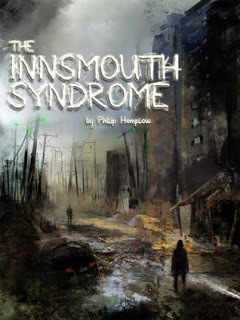
When writing Sarcophagus was there any concern in exploiting the Chernobyl tragedy for entertainment value?
It was a constant concern. I did a lot of research for Sarcophagus, and did a lot of very sobering reading about the disaster, and about the astonishing bravery and selflessness of the troops, scientists and workers in the aftermath. Sometimes plot ideas would occur (such as making the babushka who shows up in the middle of the story a ghost, or hinting that the lost souls of Chernobyl had been devoured by the entity at the heart of the story) that would have worked – that would probably have worked quite well – but would have been pretty tasteless. I felt it was important to be accurate too, insofar as possible. With Syndrome, I happily redesigned elements of the geography, the canon and anything else that got in my way. For Sarcophagus, I reflected the actuality as closely as I could. An American researcher was good enough to share some interior maps of the reactor shell (though I did have to get a little extemporaneous there, in some places), and I downloaded thousands of photographs of the site, taken over the last few decades, to try to make sure I got the details as accurate as I could. And the last words in the author’s note at the end of the book are dedicated to the sacrifices made by so many absurdly courageous people in the wake of the 1986 disaster; so that, hopefully, the reader can’t fail to take that message away with them.
How did you create Dr. Victoria Cox the protagonist of Sarcophagus?
I think that she evolved out of the role I needed her to fill. She had to be a well-qualified nuclear scientist, of a certain age and relationship status, so initially that was what defined her. Oddly, I think I modeled her more on some of the nurses I’ve known and worked with, than scientists. Possibly because I’ve seen nurses under stress more often than I have scientists!
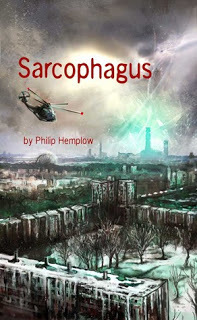
Russian folklore plays a pivotal role in Sarcophagus. Was this something you had a background in or had to research?
I’m a huge folklore enthusiast, and have been since childhood. As a kid, I loved classical mythology – mainly for the monsters and swordfighting - and ghost stories. I could recite hundreds of ghost stories! These days I flatter myself that my interest is a little more sophisticated than that. People tend to think that folklore is a thing of the past, but you can read it in the tabloids every day. The themes have changed with the times, and the age of instant communication has driven it in strange new directions, but both historical and contemporary folklore are still a map of our fears, our prejudices and our psychology. Whether its flayed Viking skins nailed to church doors, bat creatures over Chernobyl, or asylum seekers eating swans, it’s still with us, and it’s still fascinating.I knew some of the folklore I incorporated into Sarcophagus before I embarked on the project, but I learned a lot more about it in the process of writing. Czernobog and the Kaptar were already familiar, but some of the other elements and the historical background were new to me. As a writer (can I call myself that with only two books to my name?) of Lovecraftian fiction, folklore isn’t just intriguing, it’s incredibly useful. If you write a vampire story, or a werewolf story, or a Father Christmas story, you can ground it in a mass of received wisdom and shared understanding that helps the readers accept the more outré elements. Vampires may not be literally real, but they are literarily real. One reason the Lovecraft Mythos is so great to work with is that it fulfills a similar role – you can root your story in a vast body of preceding work. Folklore, though, stretches back even further, and can help you in the same way. Plus, as I say, it’s really damned cool.
H.P Lovecraft is a clear influence on your work. How did you come to read him, and why does his work resonate so much with you?
I think I first knew of him as an influence on other writers that I’d read, who all seemed to admire him. Then, as a teenager, I started to hear references to his stories in song lyrics and video games – probably still a route that brings a lot of readers to his work – and started to build up preconceptions about his Mythos. When I actually sat down to read it, I found that it was even better than I’d anticipated. I can still remember exactly where I was when I read At The Mountains Of Madness for the first time; and the sudden feeling of disorientation that came over me at the climax of The Shadow Out Of Time. I think what really stands out about Lovecraft’s Mythos fiction is the constant implication, beyond the slime and the monsters and the insanity, that mankind is doomed and without hope, and utterly dwarfed by the maleficent void that surrounds it. His primary weapons for provoking a reaction in the reader of those stories were space and time (and racism, at times, admittedly). When it works - and it frequently does if you’re reading him for the first time - the effect is amazing. He’s often compared to Poe, for some reason, but in a lot of ways they were polar opposites. Poe’s fiction looked inside people, while Lovecraft’s looks out, beyond them, as if they’re almost a distraction. If he’d lived longer, I can’t begin to imagine what he’d have been inspired to by the Holocaust, nuclear weaponry, or the space race.
What was the first truly scary novel you remember reading? What was your immediate reaction; to bury it in the closet and forget it, or hunt out similar stories?
Dracula! It scared the pants off me, and I loved it. My immediate reaction was to read it again, before it was due back at the library! (Personal Favorite as well)
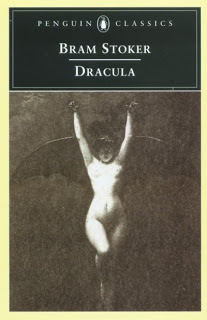
Who are some current genre authors you are following?
I’m a big fan of Tim Curran. He’s one of the relatively few Mythos authors who - I think - really gets what Lovecraft was trying to do when he wrote. He tackles the same big themes, big ideas, and big landscapes, and writes some really decent set pieces. I tend not to read much fiction when I’m actively writing though, because I’ve caught it bleeding over into my own stuff. I am looking forward to reading Tim Reed’s Bakerloo Line Train on a journey I have to make next week, since I’ll be away from the keyboard for a few days.
Do you have any other projects summing down the proverbial pipeline you would like to share with us?
My current project is a bit of a departure, in that it’s not exactly a horror story. It’s a serial killer thriller, though it does have some rather surreal, Grand Guignol elements. It’s also going to be a full length novel. It’s an idea I’ve wanted to get to grips with for ages, so now I’m doing it. After that, there are (currently) a couple of more Lovecraftian stories I’d like to write - but I have a whole list of themes and plots I want to address. If I could give up the day job, I’d stand more of a chance of keeping up. As it is, the list only ever gets longer!
Published on October 02, 2012 16:30
October 1, 2012
Rainy of The Dark Interviews M.R. Gott
Published on October 01, 2012 16:38
September 30, 2012
Halloween Bash...Rick R Reed's 5 Favorite Halloween Movies
Here at Cutis Anserina Halloween is a special time of year. In celebration we will be hearing from multiple Horror Authors with their thoughts on this most magical of Holidays.
Stay Scared,M.R.
Rick R. Reed's Five Favorite Halloween Films
1 Carnival of SoulsThis low-budget 1960s classic is one of my all-time favorites. Regardless of its minuscule budget, it delivers real terror and dread. The black and white cinematography and psychological overtones remain with viewers until long, long after the final frame.
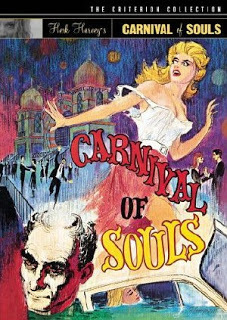
2 The Haunting (the original, 1963 Robert Wise production)The wonderful thing about The Haunting is that it's so unsettling, yet all the scariness stems from subtle, unseen horror. There are no shrieking violins, no gore, no monsters, yet the film is nightmarish and real.
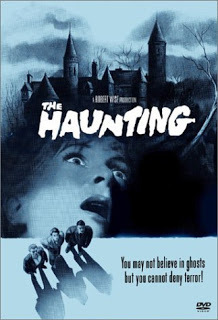
3 The ExorcistI know it's in-your-face and over-the-top, but I can watch this film again and again. See the director's cut which has a scene in it where Linda Blair comes down the steps, twisted into some obscene shape, like a spider. The subliminal moments, too, are truly terrifying.
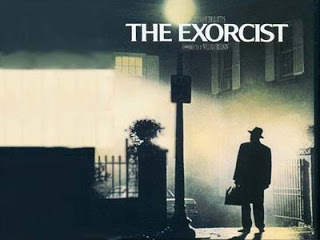
4 HalloweenThe granddaddy of all slasher flicks. I remember seeing this in the movie theater when it first came out and it scared the hell out of me; I'd never seen anything like it at the time. I was looking over my shoulder all the way home.
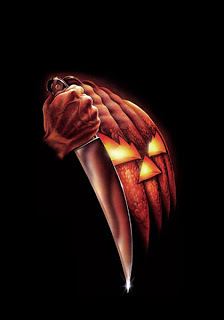
5 The StrangersThis Liv Tyler vehicle about a couple being stalked and terrorized in their vacation home is nightmare-inducing. The titular strangers are masked sadists, intent on scaring, and eventually killing, the couple. And the scariest thing of all? We never know why.
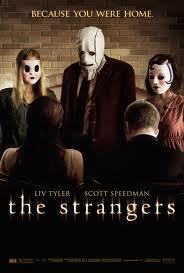 Rick R. Reed
The R is for Romance
Rick R. Reed
The R is for Romance
Rick R. Reed is all about exploring the romantic entanglements of gay men in contemporary, realistic settings. While his stories often contain elements of suspense, mystery and the paranormal, his focus ultimately returns to the power of love. He is the author of dozens of published novels, novellas, and short stories. He is a two-time EPIC eBook Award winner (for Orientation and The Blue Moon Cafe ). Lambda Literary Review has called him, "a writer that doesn't disappoint." Rick lives in Seattle with his partner and a very spoiled Boston terrier. He is forever "at work on another novel."

Contact:Website: http://www.rickrreed.com/ Blog: http://rickrreedreality.blogspot.com/ Facebook: http://www.facebook.com/rickrreedbooksTwitter: http://www.twitter.com/rickrreed
Published on September 30, 2012 12:15
September 27, 2012
M.R. Interviews...Isabelle Rowan
Please Welcome Isabelle Rowan to Cutis Anserina

What was the process like converting Ink from its original novella form into a larger story?It was a strange process and one I deliberated over for quite a while. ‘Ink’ was always going to be a novella length story, but I had a niggle that it wasn’t finished. The characters weren’t fully formed and their stories still had to be told. The original story hinted at Dominic’s maker and I really wanted to explore that aspect. Galen, the antagonist in the tale, actually became one of my favorite characters to write. Basically, I let Galen wander around my head for many months until I knew where and when he came from, and how I could introduce him into the story. I also listened to a lot of old school Marilyn Manson during that process!Once I have the characters straight in my head, I try to plot out main action points and a possible ending. I did that with ‘Ink’, but it certainly didn’t end the way I planned it. Galen just wouldn’t let that happen. My writing tends to be very organic and I’m often surprised at what comes out when I’m clicking away or scribbling in my notebook. I wrote an entire chapter and tried to force the story a certain way, but had to scrap it because the muses wouldn’t go in the direction I wanted.At some stage I would like to do a short story about Galen’s life and preparation to become a ‘night spirit’ - that would be more horror and less romance. I am a member of the Australian Horror Writers Association so I’d like to explore that a lot more.
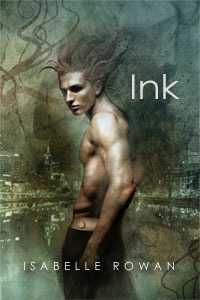
Ink the tattoo parlor and central location for the story was incredibly well realized. How did this setting make it into your novel?I have a passion for tattoos and frequently add to my own collection, so Ink is an amalgamation of a few tattoo parlors. Many of the aspects, however, are based on an actual parlor on Chapel Street where ‘Ink’ is set. It had the purple walls and industrial band posters, and yes, there was a tattooist with blue dreads. I got many of my tattoos there. Unfortunately, it was gutted in a fire and the new parlor simply didn’t have the personality of the old one, but that also gave me an ending.
Michael Chapman was a great protagonist for this story. He realized what being with Dominic would mean, and consciously moves into this situation. What was it like writing Michael?
Michael was very easy to write because he always acted on instinct. Where Dominic over-thought consequences, Michael does what his heart tells him. He knew he needed to be with Dominic despite being pushed away and despite the whole supernatural threat. He’s a smart guy with a definite will of his own. Michael is also the ‘humanity’ of the book who has to show Dominic and Galen that they still hold their humanity.
Abby the tattoo parlor’s owner was a well-placed and incredibly deep secondary character. What were your thoughts while you were creating her?
One of my aims when writing an extended story is to have a supporting cast who are just as interesting as the main characters. Abby and Scott have a small, but pivotal role in the narrative. In fact, there are times where they drive the story. But more than that, I also wanted to make them characters that readers cared about and not just regarded as plot points. Abby is almost the heart of the book. She is Michael’s sounding board who would listen to him, believe him and perhaps guide him to follow his heart and not necessarily his head. Towards the climax of the book her strength really comes into play when she is forced to ignore her fear to help the people she loves. I have a friend who I believe is a very old soul and I had her in mind when writing Abby. She is a wise woman in the true sense of the word. I hope some of her essence comes across in my words.
Ink’s prose created an incredibly rich atmosphere. Was this something you were conscious of while writing it?
When we think about childhood memories do we remember them as a series of events? Or do we smell the geraniums and feel the spongy grass under our bare feet? That’s how books are to me.I teach high school in my day job and I always remember a boy saying to me with absolute amazement one English class, “I saw it in my head miss”. That struck a chord because reading should be a visual or perhaps visceral experience. As a reader I need to be drawn into a world that I can see, hear and smell. As a result, I try my best to create that experience in my books. I’m not sure if I always succeed, but I always try.
Who do you think the perfect target audience for Ink?
That’s a tough question. ‘Ink’ fits into a few genres. It is a gay romance, but also a vampire book so there has to be elements of horror. Perhaps the perfect reader is one who is willing to step outside the usual vampire scenario and enjoy a different setting. Keep an open mind and give ‘Ink’ a try!
What fictional character has had the greatest impact on you? How so?
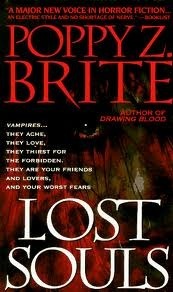
In her novel ‘Lost Souls’, Poppy Z Brite wrote a character called Ghost. I read this book many years ago, but Ghost stays with me. He is an ethereal character who, although human, seems to exist between worlds. He is a true innocent and for some reason that struck a chord for me.
What is your favorite horror novel? Why?
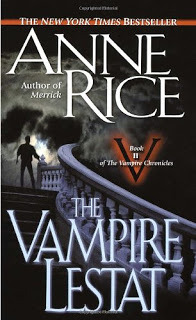
Wow, that is almost impossible to answer. Not only because there are so many of them, but also because my tastes overlap fantasy, horror and even science fiction. Okay, I’ll give it a try.Obviously I love vampire books and one of my early passions was Anne Rice - Ignore the movie and forget that portrayal of Lestat. Her books were always so rich in detail and ‘The Vampire Lestat’ totally suckered me in. However, my absolute favorite vampire novel would have to be ‘Lost Souls’ by Poppy Z Brite. Sure many of the music references are dated now, but Zillah and his gang sang to me as they drove around in their van. They were the first vamps I discovered in a modern setting – other than the Hammer Horror movie ‘Dracula AD 1972’ when I was 12 (yep, I’m that old).Other books would include ‘Weaveworld’ by Clive Barker –for his creation of a whole world. Similarly, I love Stephen King’s ‘Dark Tower’ series. See, I warned you I couldn’t pick one… ‘Vampire World’ – Brian Lumley, ‘The Raw Shark Texts’ – Steven Hall, anything by Neil Gaiman….
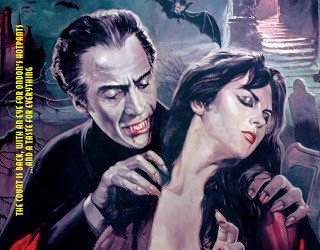
Do you have anything else coming down the pipeline you would like to share with us?I always have works in progress! Most don’t fall into the horror genre, but I plan to write another vampire story soonish. My new novella is a mm romance called ‘The Road to Byron’. Also, I’m going to be heading to the UK to travel on some intercity trains to research a serial killer tale that is swirling around my brain.Oh, and there’s that dystopian future monster one too….
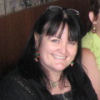
Published on September 27, 2012 15:28
September 19, 2012
John Dies at the End by David Wong
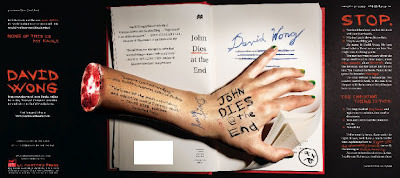
Overview;
In this reissue of an Internet phenomenon originally slapped between two covers in 2007 by indie Permutus Press, Wong—Cracked.com editor Jason Pargin's alter ego—adroitly spoofs the horror genre while simultaneously offering up a genuinely horrifying story. The terror is rooted in a substance known as soy sauce, a paranormal psychoactive that opens video store clerk Wong's—and his penis-obsessed friend John's—minds to higher levels of consciousness. Or is it just hell seeping into the unnamed Midwestern town where Wong and the others live? Meat monsters, wig-wearing scorpion aberrations and wingless white flies that burrow into human skin threaten to kill Wong and his crew before infesting the rest of the world. A multidimensional plot unfolds as the unlikely heroes drink lots of beer and battle the paradoxes of time and space, as well as the clichés of first-person-shooter video games and fantasy gore films. Sure to please the Fangoria set while appealing to a wider audience, the book's smart take on fear manages to tap into readers' existential dread on one page, then have them laughing the next.

“Saving the world, that’s Hollywood bullshit.”
Review;John Dies at the End is the most original creative inventive novel I have read in quite some time. David Wong the author and main character intertwines genuine chills and humor is spades. With David as our narrator we are treated to all his thoughts, and existential ideas are interworked seamlessly into the story.The plot revolves around David and his best friend John as reluctant investigators of the paranormal. The story is told in conversational form as John explains his story to Arnie a reporter in, ‘They China Food!’ a restaurant owned by Czech brothers who have not remodeled since the Mexican restaurant that inhabited the building closed. David’s tale unravels to Arnie, who interrupts regularly calling into question the inconsistencies in David’s story. This is the novel’s most clever element, John’s story is not consistent and it is these elements that are the justification for the books clever plot twists and reveals. John Dies at the End is strongest in trippy action sequences with David and John fighting all sort of unholy hell. They are joined early on by a dog named Mollie with many humanistic characters. A particular strong sequence works as an action parody with John bashing demonic creatures with a chair and chair related pun as each creature goes downIf you are intrigued by this synopsis, am sure you will be very amused with this tale. If your reaction to this is, ‘really…what the fuck.’ John Dies at the End is not for you.Wong’s prose flows smoothly overall but occasionally the story comes to a grinding halt as David, our narrator stares absently at the areas he finds himself in. There is no book that really compares to John Dies at the End. Imagine a manic high energy horror film with trippy scares and genuine humor.
Overview;Imagine Scooby Doo with large amounts of profanity, blatant drug use, violence and a little bit of nookie, this is the best way I can surmise David Wong’s John Dies at the end. Despite a few areas where the momentum comes to a grinding halt, I cannot recommend this book enough to anyone looking for either original horror or humor.
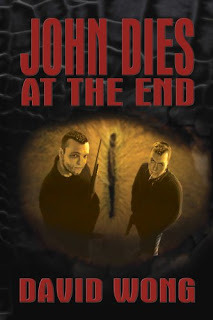
Published on September 19, 2012 17:09
September 16, 2012
Re-Animator Blu Ray
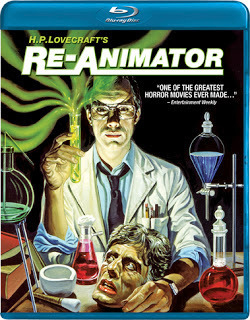
Stuart Gordon's Re-Animator was just released on Blu-Ray with a plethora of special features as well as a new HD transfer. The picture is sharp and clear, but the transfer cannot hide the age of the film.
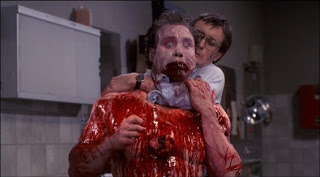
You get two commentary tracks multiple interviews as well as a brand new 70 minute documentary covering the film from inception to final edit. (The original cut was over two hours) Much of the information is brand new very different from the documentary on the special edition dvd.
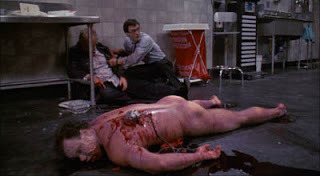
All in all I would recommend picking up this new edition. Re-Animator is a film that grows in me with each viewing and a welcome edition to my fledgling Blu-ray Collection.
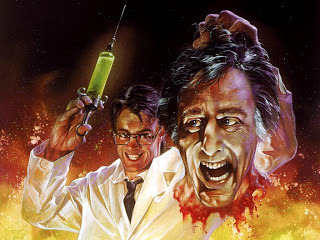
For those who can't get enough Herbert West you should pick up Army of Darkness vs. Re-Animator,(also found in AOD omnibus 1) and Hack Slash vs Re-Animator. (Found in volume 5 and omnibus 2)
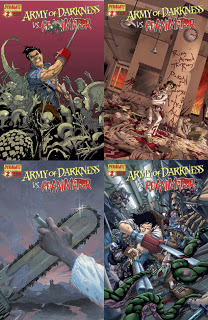
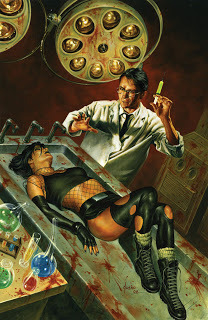
Published on September 16, 2012 17:47
September 15, 2012
Blood PC Game from 1998
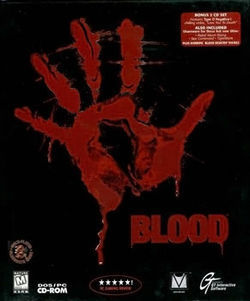
Taking place in the early 1900's Blood follows Caleb a resurrected gunfighter seeking vengeance upon the cult he once lead, and betrayed him.
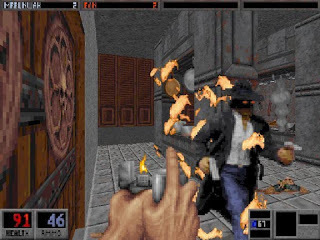
The plot doesn't matter though. This is an old first person shooter from Monolith Productions. Imagine the original Duke 3D except as a homage to old horror flicks.
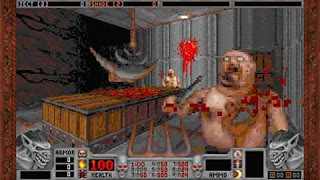
With an odd and creative weapons cache, flare guns, spray can with lighter. As well as the old stand bys; double barrel shotgun and Tommy gun. Game play is fast and fun.
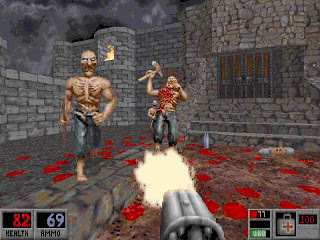
Much like Duke their are direct references to cult favorites such as, Phantasm, Friday the 13th, Army of Darkness, The Shining and much much more. A great example is when you see yourself in a mirror, then it shatters and you face off against mini versions of yourself.
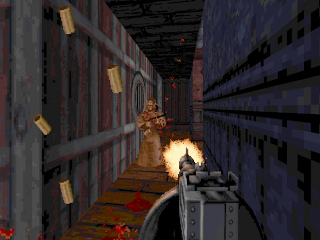
All this can be yours through the people at Good Old Games for the low price of 5.99. Click any image for the link to buy.
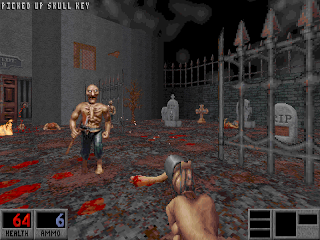
I remember loving this on my Dad's old computer in the basement and it holds up well. If you like FPS and horror flicks this is for you. Thanks to Pat for finding this link, now we just need Shadow Warrior and we'll be set.
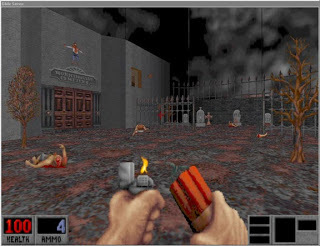
Published on September 15, 2012 11:28
September 10, 2012
Silent Hill
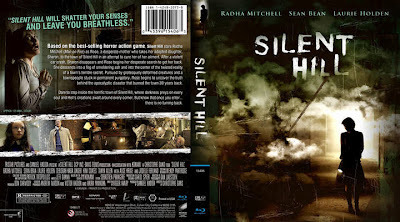
Christpoher Gans follows up his underappreciated masterpiece Brotherhood of the Wolf with Silnet Hill. Based on the game property (which I never played) and penned by Roger Avery (Pulp Fiction, Rules of Attraction) the film is an eerie and atmospheric chiller. Radha Mitchel stars as Rose De Silva, searching for her daughter’s missing physical body and her hidden emotional state.
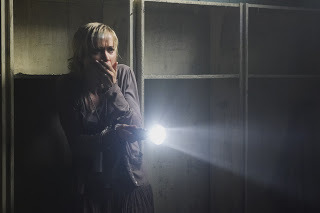
Despite some poor CGI is this a terrific film with some stellar performaces from supporting players such as Sean Bean, Deborah Kara Unger and Laurie Holden.
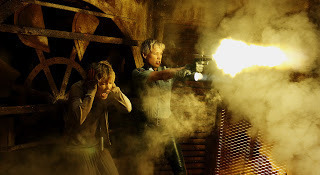
Click any image to stream instantly.
Published on September 10, 2012 16:46
September 1, 2012
My interview with The Big Thrill Ezine
What part of William Chandler’s character is imagination, and what part observation?
William’s evolution as a character was an interesting and ultimately very fulfilling process. The core of the character is based on a man I met in college. He was older than the late teen/ early twenty somethings that comprised the bulk of the class. He had recently retired from his job working as a prosecutor for the state. He had worked exclusively on cases involving child abuse. He had done this job for about twenty years and said he realized it was getting to him when he came home to the apartment he shared with his wife to find a burglar. My classmate charged the thief yelling....
Click Below for My Full interview with Azam Gill of The Big Thrill


William’s evolution as a character was an interesting and ultimately very fulfilling process. The core of the character is based on a man I met in college. He was older than the late teen/ early twenty somethings that comprised the bulk of the class. He had recently retired from his job working as a prosecutor for the state. He had worked exclusively on cases involving child abuse. He had done this job for about twenty years and said he realized it was getting to him when he came home to the apartment he shared with his wife to find a burglar. My classmate charged the thief yelling....
Click Below for My Full interview with Azam Gill of The Big Thrill

Published on September 01, 2012 07:34

